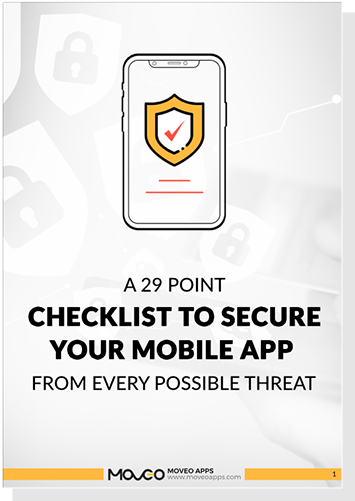In 2025, Spotify isn’t just a music streaming app. It’s a global phenomenon. With over 696 million monthly active users and 276 million Premium subscribers, Spotify has transformed from a Swedish startup into the world’s leading audio platform. But what’s truly remarkable is how Spotify’s journey offers invaluable lessons for app developers, product managers, and digital innovators.
Take India, for instance. With a user base of 83 million active users, Spotify has become a significant player in the Indian market. This growth isn’t just about numbers; it’s about understanding and adapting to diverse user needs, highlighting the importance of localized strategies, user-centric design, and continuous innovation.
What sets Spotify apart is the way it creates a space that feels immersive and free from distraction—an antidote to the mindless pull of doomscrolling. Through carefully tailored recommendations, whether in music or podcasts, it encourages users to engage with content in a purposeful way rather than just skimming endlessly. This is why so many Gen Z listeners are gravitating toward it: they want experiences that feel intentional, not overwhelming. Spotify, in that sense, goes beyond entertainment. It’s about delivering a digital environment that feels focused, enriching, and worth returning to.
So what makes spotify the most successful music app? After all it’s just an app that plays music. Music that’s available in a hundred other spaces. Despite YouTube, and a dozen other apps and websites that do the same thing, Spotify has achieved a near-monopoly status in music streaming. And that leaves us with a number of lessons to unpack. So let’s get to it!
Why is Spotify the Number 1 music streaming app?
Spotify won, not just because it had the biggest music library or the smartest recommendation engine. The real reason Spotify pulled ahead is that it understood listening as a habit, not a feature. It became a music connoisseur and an audio buddy.
It’s almost like the app talks to you. “Going for a run? Here’s a playlist.” “Feeling the Monday morning blues? Try this mix.”
Spotify became a part of its users’ life. It slipped into workouts, commutes, study sessions, late-night moods. And this was the result of meticulous machine learning as well as creative curation. Playful mood playlists instantly gave users the right songs to go with their day. The decision fatigue of which song to play was taken away. Spotify made music streaming intuitive, even empathetic, like it knew what you need right now. These creative inputs made spotify stand out in a world of easily accessible free music.
Spotify leaned into familiarity. Your playlists. Your mixes. Your moods. It feels personalized and grounding. It doesn’t just stream music, it anchors attention. In an era where every app is screaming for more screen time, Spotify quietly carved a space where people actually want to stay.
Spotify Lessons For Developing The Best Music Streaming App
1. Seamless Personalization at Scale
Spotify’s personalized recommendations—like Discover Weekly, Daily Mixes, and Mood Playlist—are a cornerstone of its success. These playlists feel tailor-made, not generic, giving each user a unique, adaptive experience. Behind the scenes, machine learning algorithms, real-time data pipelines, and analytics power this personalization.
Takeaway for app developers: Incorporate personalization in app design to create experiences that evolve with users’ behavior. Personalized apps increase user retention and drive engagement by making users feel seen and understood.
2. Context-Aware User Experience
Spotify doesn’t just wait for users to pick music. It anticipates context, suggesting workout playlists, calming music late at night, or tracks that match commuting rhythms. It feels like having a friend who knows your moods and routines, quietly nudging you with the perfect soundtrack at the perfect moment.
Spotify blends into your day so seamlessly that you barely notice it, until you realize life without it would feel a little quieter, a little less tuned in. That’s the beauty of an app that really knows its job.
Lesson: Use contextual UX in your apps. Predict user intent based on time, location, or activity to reduce friction and create seamless, habit-forming interactions.
3. Delightful Micro-Moments
Spotify delivers micro-interactions that delight users: mood-based playlists, concert alerts, and Countdown Pages for upcoming releases. These small, thoughtful touches create memorable experiences that drive habitual engagement.
They’re not flashy or overwhelming; they’re personal, timely, and intuitive. Over time, these small experiences build familiarity and trust, creating a sense of connection that keeps users engaged and tuned in.
Takeaway: Focus on user engagement strategies that emphasize micro-moments. Little bursts of delight can make your app memorable without overwhelming users with features.
4. Speed, Performance, and Responsiveness
A slow or laggy app is an instant turn-off. Spotify, by contrast, runs smoothly across devices and network conditions, making every search, play, and skip feel effortless. Whether you’re on a crowded train with spotty Wi-Fi or relaxing at home on a high-speed connection, the app delivers instantly. It’s the kind of reliability that makes users trust it without thinking, letting them focus on the music, and not on whether the app will work.
Lesson for developers: Optimize app performance and speed from day one. A responsive, lightweight app improves user retention and encourages regular usage.
5. Cross-Platform Consistency
Spotify delivers a consistent experience across mobile, desktop, smart speakers, and cars. Your playlists, recommendations, and settings follow you everywhere, so there’s no need to reset, search, or remember where you left off. It’s like picking up a conversation mid-sentence. The app feels familiar and effortless. That kind of seamless multi-device experience reduces friction, builds trust, and keeps users engaged no matter how or where they listen.
Lesson: A consistent, familiar interface across devices reduces friction and builds trust, making users more likely to engage regularly.
6. Intelligent Content Discovery
Spotify strikes a delicate balance between the songs you already love and new tracks you haven’t discovered yet. Its recommendation engine nudges you toward fresh music that actually fits your taste, so you feel pleasantly surprised rather than lost in an endless sea of options. It’s like having a friend who knows your favorite bands but also whispers, “Hey, you might like this too,” making exploration fun, effortless, and never overwhelming.
Lesson: Intelligent content discovery systems in apps keep users exploring while reducing decision fatigue — a key factor in long-term engagement.
7. Built-in Behavioral Analytics
Spotify continuously tracks how users interact with the app—skips, likes, playlist additions, and listening habits. Every action feeds into smarter recommendations, subtle UI tweaks, and new feature ideas. It’s like the app is quietly learning from your tastes and habits, so the next time you open it, it feels even more in tune with what you want. This constant feedback loop turns data into delight, helping Spotify evolve in ways that feel natural rather than forced.
Lesson: Integrate analytics and user behavior tracking from the start. Understanding how users interact allows data-driven decisions, improving engagement and retention.
8. Habit-Forming Design
Features like Daily Mix and Release Radar subtly integrate Spotify into users’ daily routines. It doesn’t push engagement, just encourages habitual use naturally. Users know they’ll always find something worth listening to, without the burden of searching.
Lesson: Design apps to be habit-forming without being intrusive. Identify natural touchpoints in users’ daily lives to encourage repeated engagement.
9. Culture of Experimentation
Spotify continuously tests new features, UI tweaks, and recommendation algorithms. Spotify is a great example of a data-driven app, ensuring excellent response to user needs. This constant iteration makes Spotify a great example of a data-driven app done right. Instead of guessing what users want, it listens to their behavior at scale. What they skip, save, replay, or abandon, and uses those signals to refine both recommendations and product design.
Lesson: Create a framework for A/B testing and continuous experimentation. Iterating based on real user feedback ensures long-term relevance and growth.
10. Emotional Connection Through UX
Spotify goes beyond function, creating emotional resonance. Mood playlists, personalized recaps like Your Year in Music, and intuitive curation make users feel seen, understood, and connected.
Lesson: Focus on emotional UX design. Products that evoke feelings and resonate personally drive loyalty far more effectively than those that are purely functional.
Final Takeaway
Spotify’s rise is the lived experience of mastering the craft of building digital experiences that feel alive. It shows us that success doesn’t come from adding more features, but from creating the right ones, delivered with precision, empathy, and consistency.
For app builders, the lesson is clear: the future doesn’t belong to the apps that shout the loudest. It belongs to the ones that quietly, persistently weave themselves into people’s routines—apps that anticipate, that listen, that make us feel just a little more human when we use them.
Spotify figured out that an app can be more than software. It can be a companion, a habit, even a memory-maker. The question to ask yourself, then, isn’t “How do I build the next Spotify?” It’s “How do I make my app matter, in the small, invisible ways that keep people coming back?”
At MoveoApps, we think about product design the same way. We are building apps that don’t just function, but resonate. If you’re ready to create something that slips effortlessly into people’s lives and stays there, let’s talk.


